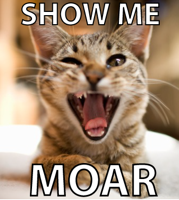Why WhatsApp’s founders still carry old Nokia phones
Joyce Park stashed this in Tech biz
Stashed in: Founders, Android, China!, Startup Lessons, Awesome, India, Snapchat, WhatsApp!
I'm pretty sure that a lot of VPs of engineering in Silicon Valley don't even use Android... but that's why they didn't get bought for $19 billion.
Their mission is to build a simple messaging service that can be used by every single person in the world. To do that, they had to do the hard work of building their service for lots of unsmart phones.
The key insight is that WhatsApp is valuable because what they did is very hard.
Using old Nokias and Blackberries reminds them of what technologies most of the world has access to:
WhatsApp’s founders aren’t Luddites. They also carry other, more modern phones. But the pair—spotted carrying these phones by Tim Bradshaw, a San Francisco-based reporter at the Financial Times—understand that despite the great growth numbers and sales figures of smartphones, older, clunkier phones still rule the world. And they aren’t going awayanytime soon.
Take the S60 operating system on which Koum and Acton’s phones run. Nokia created it, but no longer supports it. Yet it remains one of the most widely used in India, according to Kavin Mittal, who runs Hike, an Indian messaging app that allows messaging between smartphones and feature (i.e. non-smart) phones too, using ordinary text messages. To crack markets like India, makers of apps must go beyond the worlds of Apple’s iOS and Google’s Android operating systems and look at what people are actually using.
Though WhatsApp doesn’t work on the most basic phones, it is rare in that it works on pretty much all types of smart (or smart-ish) phones—not only iOS and Android, but also BlackBerry, Windows Phone and Nokia’s S40 and Symbian. That is one reason why it has reached 450 million users. Zomato, an Indian restaurant-finding app that is now expanding abroad, has the same philosophy: It is availableacross every platform imaginable. Another example is Mxit, a messaging app from South Africa that is hugely popular in Africa. It owes a large part of its popularity to the fact it works on feature phones.
Consider these numbers: Smartphone penetration in India remains under 10%, according to Macquarie, an investment bank. Fewer than 5% use 3G. In Indonesia, the world’s fourth-most populous country, barely one person in five has a smartphone. Even in China more than half of the population uses more basic phones. There remains huge opportunity in these markets, and it’s looking increasingly like the winners will be local players. Phone-makers Xiaomi in China and Micromax in India have both eaten up chunks of the the local market, and there seems to be a similar trend in software.
To understand the next billion people to come online, mostly through mobile phones, businesses must understand their needs. To do that, they need to use the same phones they do.
Worldwide smartphone adoption is happening more slowly than we think.

















8:03 AM Mar 07 2014